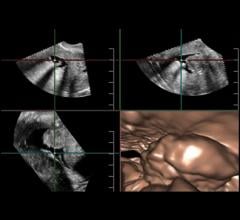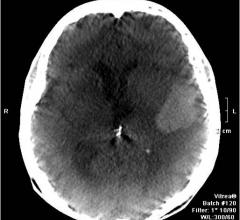If you enjoy this content, please share it with a colleague
Canon Medical Systems USA
With headquarters in Tustin, Calif., Canon Medical Systems USA Inc. markets, sells, distributes and services radiology and cardiovascular systems, and coordinates clinical diagnostic imaging research for all modalities in the United States. Canon Medical Systems Corporation, an independent group company of Canon Inc., is a global leading provider of diagnostic imaging systems including CT, MRI, Ultrasound, X-ray systems and clinical laboratory systems. In business for more than 100 years, Canon Medical Systems Corporation (formerly Toshiba Medical Systems Corp.) was built to improve the quality of life for all people. It delivered on this mission with medical innovations that are “Made for Life”—made to improve the lives of patients, clinicians and administrators. Its legacy was built with pioneering medical technology, such as the world's first X-ray machines in 1932 and Japan's first magnetic resonance imaging (MRI) systems in 1983. Canon Inc. entered the healthcare business in 1940 with the development of Japan’s first indirect X-ray camera which was used for the early detection of pulmonary tuberculosis. The partnership of Toshiba Medical Systems Corporation and Canon (now Canon Medical Systems Corp.) brings together two cutting-edge technology businesses, founded with similar values of creativity, flexibility and patient-friendly healthcare solutions. Today, their combined history of research and innovation drive forward Canon Medical Systems’ vision for building a world-class healthcare enterprise. For more information: https://us.medical.canon/
Canon Medical Systems’ offering includes: computed tomography, magnetic resonance, ultrasound, X-ray, cath and EP lab
Videos
-
August 31, 2021
Several radiology IT vendors at 2021 Healthcare Information Management Systems Society (HIMSS) conference demonstrated computed tomography (CT) imaging advanced visualization software software to help automatically identify and quantify COVID-19 pneumonia in the lungs. These tools can help speed assessment of the lung involvement and serial tracking can be used to assess the patient's progress in the hospital and during long-COVID observation.
Examples of COVID analysis tool shown in this video include clips from booth tours at:
• Fujifilm
• Siemens Healthineers
• Canon (Vital)Canon received FDA clearance for its tool under and emergency use authorization (EUA).
Siemens said its tool was part of its lung analysis originally developed for cancer but modified and prioritized to aid in COVID assessments.
HIMSS Related Content:
Advances in CVIS and Enterprise iImaging at HIMSS 21
Photo Gallery of New Technologies at HIMSS 2021
VIDEO: Importance of Body Part Labeling in Enterprise Imaging — Interview with Alex Towbin, M.D.
VIDEO: Coordinating Followup for Radiology Incidental Findings — Interview with David Danhauer, M.D.
VIDEO: Cardiology AI Aggregates Patient Data and Enables Interactive Risk Assessments
VIDEO: Example of Epsilon Strain Imaging Deep Integration With Siemens CVIS
January 26, 2021This is an example of a COVID-19 (SARS-CoV-2) positive patient's lung computed tomography (CT) scan. The video scrolls through the image slices of the scan and shows the typical white, ground glass opacities (GGO) caused by COVID pneumonia. The pneumonia typically appears along the walls of each lobe of the lung, especially the chest wall and the lower portions of the lungs. This scan is from a Canon Aquilion Prime SP CT scanner and used Advanced intelligent Clear-IQ Engine (AiCE), an artificial intelligence-driven image reconstruction software to improve image quality of lower-dose scans. This was shown by Canon Medical as an exmaple of CT image quality for the virus at the 2020 Radiological Society of North American (RSNA) meeting.
Read more about this system and its launch in 2020 to address COVID, Canon Medical Launches CT Solution for Patients with Viral Infectious Diseases.
VIDEO: How to Image COVID-19 and Radiological Presentations of the Virus interview with Margarita Revzin, M.D., associate professor of radiology and biomedical imaging, Yale School of Medicine.
Find more radiology clinical images of coronavirus in this photo gallery.
February 08, 2019This is an example of an arterial venous malformation (AVM) in the brain imaged on a Canon Alphenix Alpha angiography system. It shjows a contrast injection highlighting the vessels, which have been color coded to show the position of the veins and arteries involved in this vascular defect.
July 21, 2017DAIC and ITN Editor Dave Fornell discusses some of the most innovative new computed tomography (CT) technology and trends at the Society of Cardiovascular Computed Tomography (SCCT) 2017 meeting. Read the article "Advances in Cardiac CT Technology" and watch VIDEO: Advances in Cardiac CT Imaging.
October 05, 2016Contributing Editor Greg Freiherr offers an overview of digital radiography (DR) advances at the Association for Medical Imaging Management (AHRA) 2016 meeting. Read the article “The Coming Push for DR.” Watch a technology report sidebar video on new DR Systems technology.
December 14, 2015Video discussion of new technology and trend highlights at the Radiological Society of North America (RSNA) 2015 meeting with ITN editor Dave Fornell and ITN contributing editor Greg Freiherr.
December 11, 2015ITN/DAIC Editor Dave Fornell shows his choices for some of the most innovative new imaging technologies on the expo floor at Radiological Society of North America (RSNA) 2015 meeting.
December 11, 2015Interview with Jon Brubaker, MBA, RCVT, ultrasound technology analyst, MD Buyline, explains the trends and new technology he saw at the Radiological Society of North America (RSNA) 2015 meeting.
July 18, 2014The Aplio 500 CV is the system of choice for all premium 2-D cardiac exams. Featuring Toshiba's 2-D Wall Motion Tracking technology, the system provides stunning visualization and quantitative analysis of myocardial wall motion with unrivaled accuracy and reproducibility. With on-board cardiac quantification measurements in all directions (radial, circumferential, 2D rotation and longitudinal), the Aplio500 CV system is designed to get the most comprehensive information anytime and anywhere in the hospital, right at the patient's bedside. Additional cardiac-specific technologies include Tissue Enhancement, Advanced Dynamic Flow, Lateral Gain Controls, Tissue Doppler, Stress Echo, Flex-M Mode and Auto IMT. The system is easy to use, with superior ergonomics and a smaller footprint, making it easier to maneuver for greater patient access and improved workflow. For more information: http://medical.toshiba.com/products/ul/cardiovascular/index.php
July 03, 2014DAIC Editor Dave Fornell highlights his choices for some of the most innovative new technology at the American Society of Echocardiography (ASE) 2014 meeting.
June 20, 2014DAIC Editor Dave Fornell shares his choices for the most innovative new technologies in nuclear imaging that were on display at the 2014 Society of Nuclear Medicine and Molecular Imaging (SNMMI) annual meeting.
July 15, 2013DAIC Editor Dave Fornell highlights some of the biggest trends and most innovative technology discussed during the American Society of Echocardiology (ASE) 2013 annual meeting.
RELATED CONTENT
Feature | Dave FornellThe Radiological Society of North America (RSNA) annual meeting has transitioned in recent years from an imaging device focus to an imaging information technology focus. The interest in software continued at this year’s meeting, partly fueled by the need for healthcare organizations to meet Stage 1 and 2 meaningful use requirements. Two key trends seen throughout the show floor included remote viewing systems for radiology images and technology streamlined to aid workflow efficiency.
Feature | Raissa RochaWith ever-increasing concerns about radiation dose and the appropriate use of diagnostic imaging tests, doctors are continuously looking for ways to better image their patients. Advances in ultrasound are making the technology appear more attractive for certain clinical applications, from breast health to cardiology, thanks to their noninvasiveness, cost-effectiveness and lack of radiation. Some of the emerging innovations in ultrasound, such as real-time 3-D imaging and the development of wireless transducers, are set to keep the market going throughout 2013 and beyond.
Feature | By Dave FornellJust a few years ago, the debate in radiology departments about workhorse X-ray systems was whether to convert from analog film to computed radiography (CR) cassettes and digital readers, or to direct imaging digital radiography (DR) systems. Today, there is no doubt DR has won that debate and is being widely adopted, and CR is falling out of favor.
FeatureA new computed tomography (CT) scanner substantially reduces potentially harmful radiation while still improving overall image quality. National Institutes of Health (NIH) researchers, along with engineers at Toshiba Medical Systems, worked on the scanner. An analysis of data on 107 patients undergoing heart scans found that radiation exposure was reduced by as much as 95 percent compared to the range of current machines, while the resulting images showed less blurriness, reduced graininess and greater visibility of fine details.
FeatureAccording to a new market research report "Breast Imaging Technologies Market (Digital Mammography,3D Breast Tomosynthesis, Breast MRI, Breast Ultrasound, Molecular Breast Imaging, Optical Imaging, PET/CT/PEM Modalities) Technology and Market Analysis & Global Forecasts to 2017" is an attempt to showcase the market impact of current and emerging breast imaging technologies having excellent growth potential in the coming five years. The technologies profiled in the report are segmented into Ionizing breast imaging modalities and Non-Ionizing breast imaging technologies on basis of radiation. Ionizing breast imaging modalities include Mammography, 3D Breast Tomosynthesis, Cone beam Computed Tomography (CBCT), Positron Emission Mammography (PEM), Molecular Breast Imaging (MBI), Positron Emission Tomography (PET) and Breast Specific Gamma Imaging (BSGI). The various Non-ionizing modalities for breast screening covered in the report are Breast MRI, Optical Imaging, Breast thermography and Breast Ultrasound.
TechnologyToshiba has unveiled a 640-slice computed tomography (CT) scanner at the 2012 annual meeting of the Radiological Society of North America (RSNA). The Aquilion One Vision Edition is equipped with a gantry rotation of 0.275 seconds, a 100 kw generator and 320 detector rows (640 unique slices) covering 16 cm in a single rotation, with the industry’s thinnest slices at 500 microns (0.5 mm).
Feature | Dave FornellThe latest advances in cardiovascular imaging are usually shown first at the Radiological Society of North America (RSNA) annual meeting, the largest radiology show in the world, held the last week of November in Chicago. After spending five days walking three expo halls filled with more than 600 product vendors, the following is my editor’s choice for the most innovative new cardiovascular imaging technology.
Feature | Dave FornellThere were several evident trends on the show floor at RSNA 2012, including interest in software fueled by Stage 1 and 2 meaningful use requirements, new mammography solutions and innovations in imaging hardware.
NewsFeaturing hovercraft-like C-arm movement and the unique Access Halo, the WorkRite technology on Toshiba America Medical Systems Inc.’s Infinix-i cardiovascular X-ray systems makes interventional procedures easier for clinicians and improves patient care.
TechnologyGiving clinicians a more complete picture while improving safety during interventional procedures, Toshiba America Medical Systems Inc. introduces Spot Fluoroscopy for its Infinix-i systems. Enabling quicker diagnoses and lower dose, clinicians can observe a target region of anatomy using Spot Fluoro’s live fluoroscopy while viewing the last image hold (LIH) surrounding area.
© Copyright Wainscot Media. All Rights Reserved.Subscribe NowE-newsletter Subscription form














 February 08, 2013
February 08, 2013 








